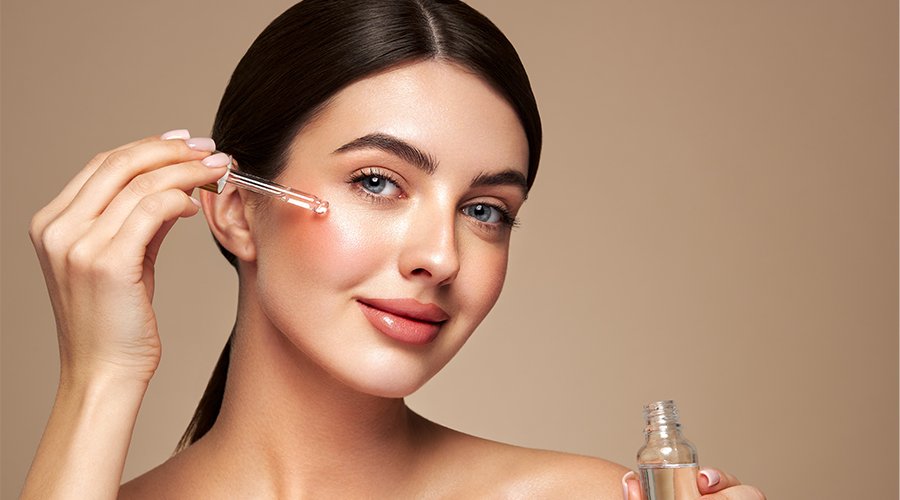The Strategic Selection and Application of Skin Serums: A Clinical Perspective
In the sophisticated landscape of modern dermatology and skincare, serums represent a cornerstone of targeted therapeutic intervention. These formulations are not mere cosmetic embellishments but are potent delivery systems, engineered to transport high concentrations of specific active ingredients deep into the epidermis. [1] Unlike moisturizers, which primarily form a protective, hydrating barrier on the skin’s surface, serums are characterized by smaller molecules that facilitate enhanced penetration, allowing for focused treatment of concerns ranging from photoaging and hyperpigmentation to dehydration and acne. [1][2] The efficacy of a serum-based regimen hinges on a precise, evidence-based approach to product selection, tailored to individual skin biology and desired clinical outcomes. A masterful understanding of active ingredients, optimal concentrations, and strategic application is paramount to harnessing their full potential and achieving tangible, lasting improvements in skin health and appearance.
Deconstructing the Formulation: Beyond Active Ingredients
The true efficacy of a serum is determined by more than just its list of active ingredients; the sophistication of its formulation is a critical, often overlooked, factor. The delivery system—the vehicle that carries the active molecules—is fundamental to a product’s performance. Advanced systems like liposomal or polymer encapsulation are designed to protect volatile ingredients, such as retinol and L-ascorbic acid, from degradation while enabling a controlled, sustained release into the skin. [3] This technology not only enhances the bioavailability of the active ingredient but also significantly reduces the potential for irritation, a common issue with potent agents. [3] Furthermore, the pH of a serum is a crucial determinant of its stability and effectiveness. For instance, Vitamin C in its most potent form, L-ascorbic acid, requires a highly acidic pH of approximately 3.5 or lower to remain stable and effectively penetrate the skin. [4][5] Conversely, ingredients like retinol and niacinamide perform optimally at a higher pH, typically between 5.0 and 7.0. [4][6] Using products with incompatible pH levels simultaneously can neutralize their effects or provoke irritation, rendering a well-intentioned routine counterproductive. [4][6] The base of the serum—whether water, oil, or silicone—also dictates its texture, absorption, and suitability for different skin types, with lightweight, water-based formulas being ideal for oily skin and more emollient bases benefiting dry skin. [7]
A Clinical Guide to Key Active Ingredients and Concentrations
A discerning approach to serum selection requires a focus on clinically validated ingredients at concentrations proven to be effective. Relying on marketing claims is insufficient; instead, one must scrutinize the ingredient list for specific compounds and their percentages. For anti-aging, retinoids are the undisputed gold standard. This family includes over-the-counter retinol and retinaldehyde, as well as prescription-strength tretinoin. [8] Clinical studies demonstrate that regular application of topical vitamin A leads to smoother skin and a reduction in fine lines. [8] For brightening and antioxidant protection, Vitamin C is paramount. L-ascorbic acid is the most researched form, with optimal efficacy observed at concentrations between 8% and 20%. [9][10] Formulations that synergistically combine Vitamin C with Vitamin E and ferulic acid show enhanced stability and photoprotective capabilities. [9][11] Niacinamide (Vitamin B3) is a versatile ingredient celebrated for its ability to strengthen the skin barrier, regulate sebum, and reduce hyperpigmentation by inhibiting melanosome transfer. [8][12] Clinical evidence supports its use at concentrations of 2-5% for broad benefits, while higher concentrations up to 10% can target more persistent issues. [13] For chemical exfoliation, alpha-hydroxy acids (AHAs) like glycolic acid work on the skin’s surface to improve texture, while the oil-soluble beta-hydroxy acid (BHA) salicylic acid penetrates pores to address acne and congestion. [14] Polyhydroxy acids (PHAs) offer a gentler alternative for sensitive skin. [8] Finally, peptides, which are chains of amino acids, act as signaling molecules to stimulate collagen production, thereby improving skin firmness and elasticity. [15][16]
Strategic Implementation for Maximum Efficacy
To maximize the benefits of a serum-centric skincare routine, a strategic and disciplined approach to application and layering is essential. The sequence of application should be guided by product consistency, moving from the thinnest to the thickest texture to ensure optimal absorption. [17][18] However, a more scientifically sound rule is to apply products based on pH, with low-pH serums like Vitamin C or AHAs/BHAs being applied first to clean skin, followed by a waiting period of several minutes before applying higher-pH products like niacinamide or retinol. [19] This prevents the ingredients from neutralizing each other. For those using multiple potent actives, such as retinoids and exfoliating acids, “serum cycling” is a highly effective strategy. This involves using these powerful treatments on alternate nights to minimize the risk of irritation and over-exfoliation while still reaping their individual benefits. [11] For instance, a well-structured weekly routine might involve a retinoid on Monday and Wednesday, an exfoliating serum on Friday, and hydrating or recovery serums on the remaining nights. It is crucial to recognize that some ingredient combinations should be avoided in the same routine; for example, layering unstable forms of Vitamin C with retinol is generally not recommended due to conflicting pH requirements and increased potential for sensitivity. [4][20] Ultimately, the routine must be anchored by the daily application of a broad-spectrum sunscreen, as ingredients like retinoids and AHAs increase photosensitivity, making the skin more vulnerable to UV damage. [4]



